Leather To Reupholster Dining Chairs
I have become a huge fan of leather furniture. We have a white leather couch that I found on Craigslist a few months ago. It is constantly getting spilled on and stained by our two little boys (okay, and sometimes me too.) But absolutely everything wipes off with a damp cloth! It's like magic and I am now a total leather convert. As long as nobody stabs it, it is nearly indestructable!
I knew that the next time I needed to reupholster furniture, I would definitely be using leather, so when Leather Hide Store contacted me about working with some of their gorgeous leather, I was all in.
I was provided free leather from Leather Hide Store for this project, but the idea and execution were all me!
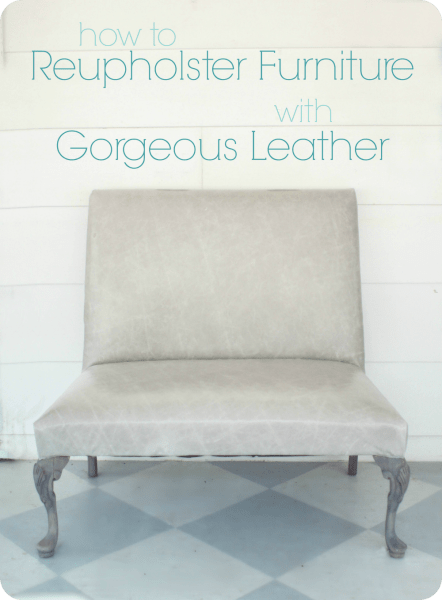
A few months ago I picked up this little settee for $15 at a yard sale. I love the proportions of it and those gorgeous legs. At one time this was a beautiful piece with leather upholstery and mahogany wood.
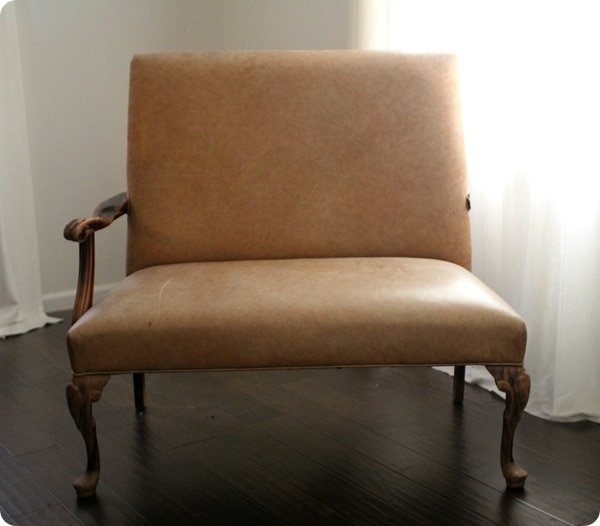
Unfortunately it was in horrendous shape. The finish on the legs was wearing off, one arm was missing, and the leather was severely scratched up. The funny thing is I was sure that this was a vintage piece of furniture based on the shape and condition, but then I found a receipt on the underside. This little settee was bought from a furniture store in 2003! How in the world did it get in this terrible condition in only thirteen years! Wow!
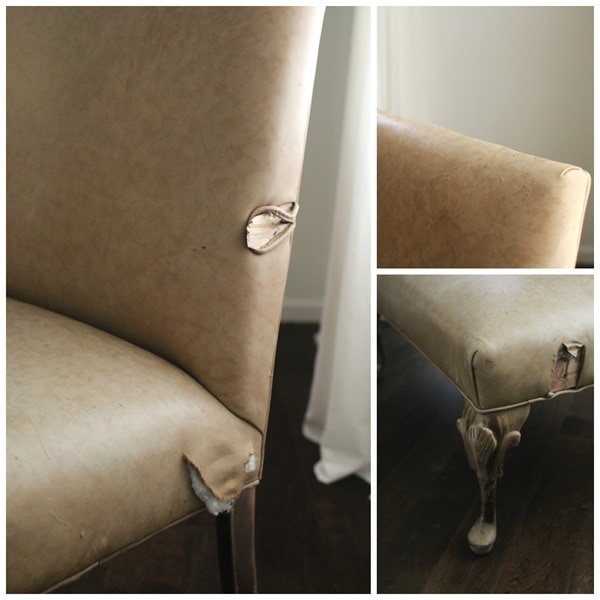
I knew this would be the perfect piece to reupholster with leather from Leather Hide Store.
After looking at tons of samples, I chose an amazing gray leather called grey bone distress. It is gorgeous. Seriously.
Because my little settee is mostly straight lines, it wasn't terribly difficult to reupholster – definitely much easier than the armchair rocker I upholstered, but more difficult than a simple dining chair cushion.
Reupholstering furniture is one of those things that seems way more intimidating than it actually is.
The first step is to start removing the old upholstery – and in my case the lone remaining arm. The deconstruction is actually the most important part of the whole process. As you are taking each piece apart, you are also uncovering exactly how it was put together – and exactly how you need to put it back together.
For pretty much any kind of chair, you start at the bottom. Remove what is at the bottom of your seat, making note of how exactly it was attached. As you are taking things apart, it really helps to take pictures of how things looked, make notes of what you are doing, and label each piece so you know where it goes. Also, make sure you don't throw away any of the pieces you remove. The fabric or leather you are removing will become the pattern for your new upholstery. Also keep any cardboard, tack strips, or extra foam. All of this can be reused when you reupholster.
Typically, I just use needle nose pliers to remove all the staples. If there are some that need a little more help, you can use a small flathead screwdriver to pry them out. I have also heard great things about upholstery staple removers. I haven't bought one for myself yet but it's so inexpensive, I'm pretty sure I will for my next upholstery project.
Once the bottom is removed, the back is generally next. Continue to remove pieces as you come to them, making sure to label each piece you remove.
This was the first piece I have reupholstered that I didn't have to remove all of the old fabric. I left the old leather on the seat and the front of the settee. It was structurally in good shape, was nice and tight, and provided a smooth surface for the new leather so there was no reason to go to the extra effort of removing it.
Next step is using your old fabric pieces as a pattern for cutting the new fabric. This leather is so gorgeous, I have to admit I was nervous about messing this part up!
Since I didn't remove the old leather from the seat and seatback, I needed some way to make a pattern for these pieces. I decided the easiest thing would be to use leftover wrapping paper to make a pattern. I grabbed my least favorite Christmas wrapping paper and draped it over the piece to cut out a pattern for each piece.
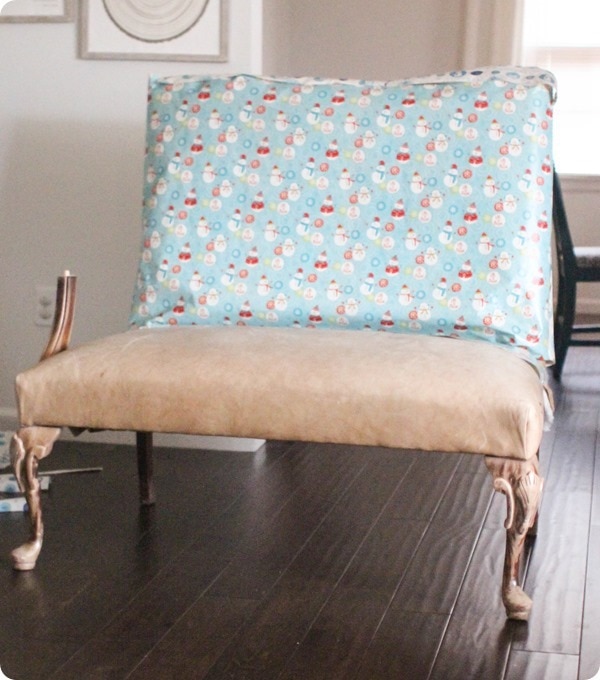
This is the point in the project where things started to look a bit hopeless. Honestly, it happens at some point or another in every DIY project. As I laid my pieces out on my leather, I quickly realized that I wasn't going to be able to fit all three pieces (the seat, seatback, and back).
While my leather was technically big enough, I needed three pretty large rectangles and there was just no way to make that happen. Luckily, I thought of a creative solution that I personally really like.
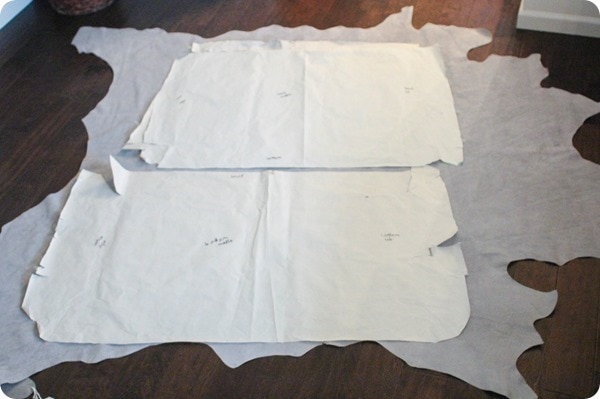
I laid out my seat and seatback pieces, traced them onto the back of the leather using a marker, and then cut them out. The back of the piece is where things got creative. I took the scraps that were leftover and pieced them together to make one large piece for the back. Instead of trying to make straight line seams, I let the natural curves of the leather show.
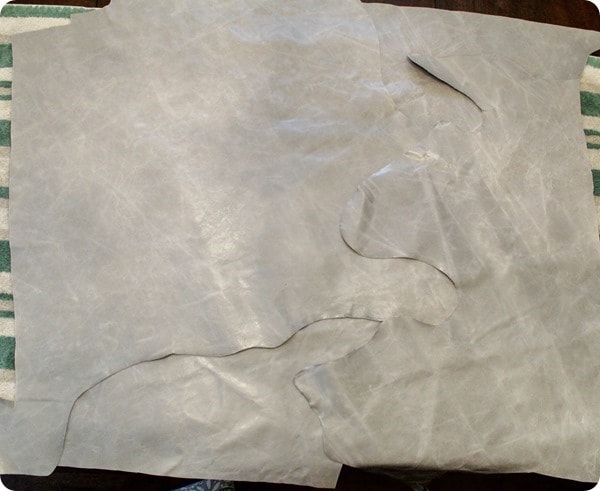
Once everything was laid out the way I wanted, I simply glued the pieces together. I'm sure they would be much better stitched together, but to be quite honest, this was good enough for me. I read recommendations online to glue leather using contact cement and the closest thing I already had on hand was E6000 glue so that is what I used and it worked great. To make it extra durable, I also used duct tape to help seal the seams from the back. (Classy I know, but hey, it works great.)
I went ahead and dealt with the scuffed up legs before adding my new leather. The old finish was in really poor shape so I started by sanding off what was still hanging on. Even though mahogany is amazing wood, the reddish tone just wasn't right for me. So even though wood purists may want to stone me for this, I gave the legs a wash with some watered-down light gray paint and then a dark gray glaze.
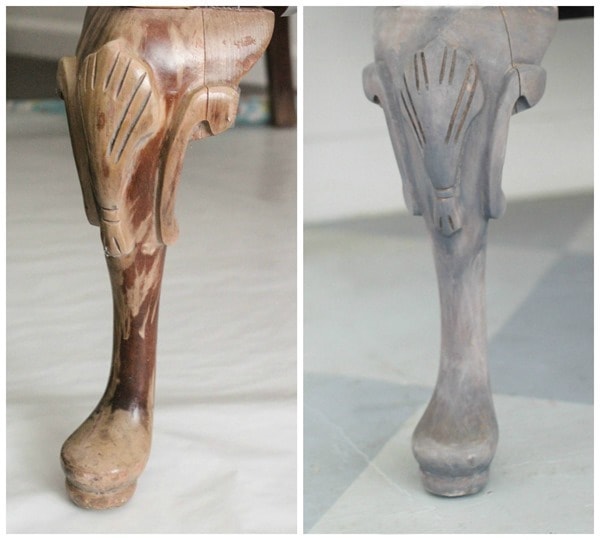
Because the legs blend so nicely, your focus stays on the beautiful upholstery where it belongs.
Then it was just a matter of putting everything back together the same way I took it apart. Start by replacing the last piece you removed and work until you get back down to the bottom. As you are stapling on the new leather, be sure to pull everything nice and smooth as you go.
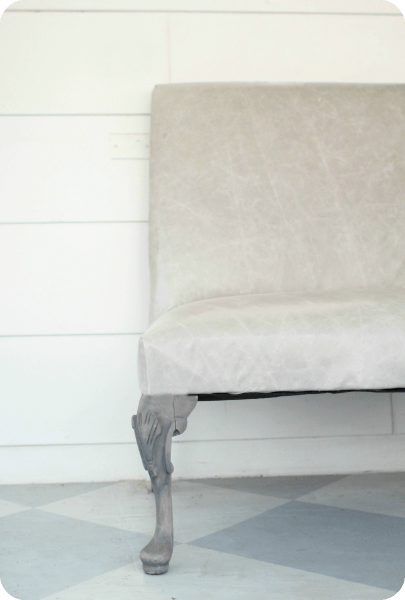
Beautiful!
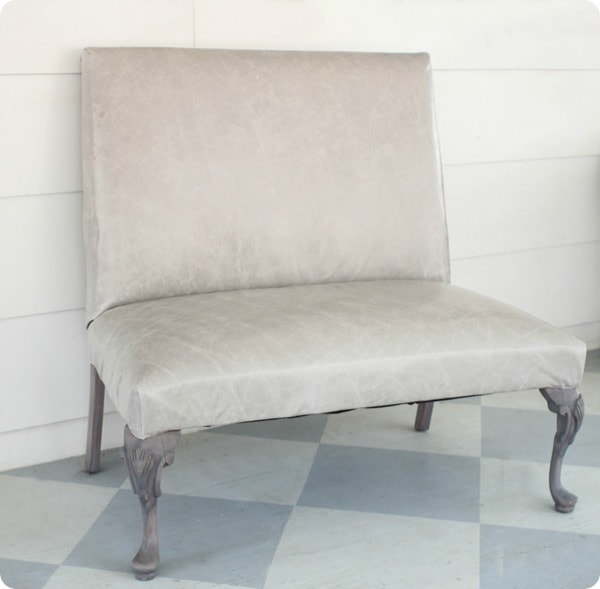
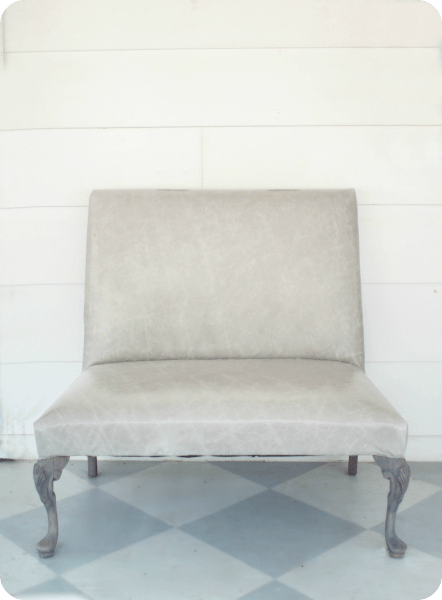
And here's the back – I really love it. (My husband isn't as sure, but he isn't really known for his design eye, so I'm not worried about it. Plus, to be honest, nobody in real life sees the back anyway.)
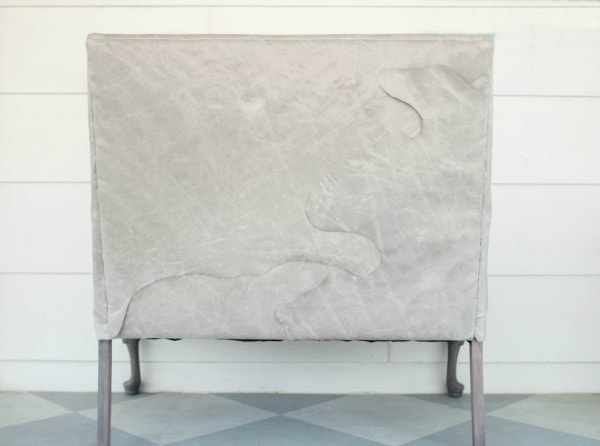
For now, this little settee has found its home at our dining table.
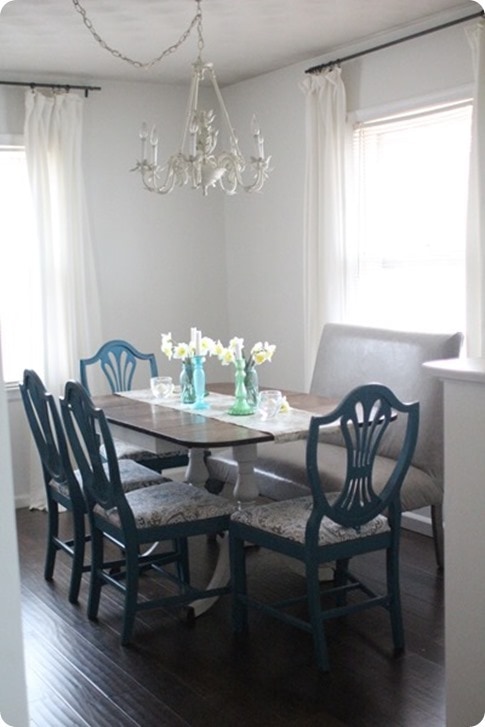
I am a little sad that it is so hidden away, but it looks great there. I love how well it works with the chairs I previously painted and reupholstered. Plus my 3 year old loves to sit on the 'couch' at dinner and I have no problems letting him since it is so easy to wipe clean. It's the perfect blend of pretty and functional.
I'd love to hear what you honestly think about the patchwork back – beautiful and different or crafty and messy?
And if you're thinking about tackling a furniture upholstery project of your own, The Leather Hide Store has put together a fantastic resource for figuring out how much fabric (or leather) you need to reupholster more than 100 different types of furniture along with a fabric calculator right here.
Happy upholstering!
Other DIY upholstery ideas I think you'll love:
- How to Reupholster Chairs: A Simple Step-by-Step Guide
- 10 Secrets for Finding Incredibly Cheap Fabric
- How to Reupholster a Couch on the Cheap

Leather To Reupholster Dining Chairs
Source: https://www.lovelyetc.com/how-to-reupholster-furniture-with-gorgeous-leather/


0 Komentar